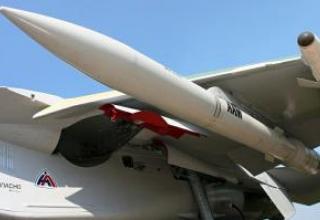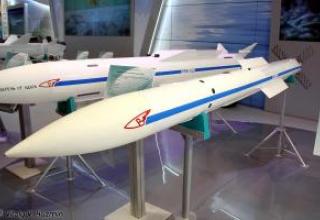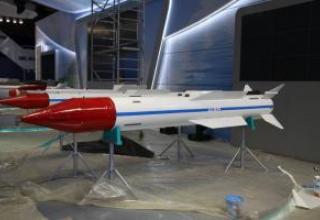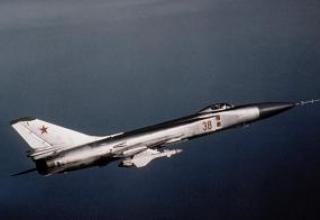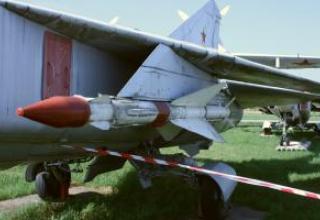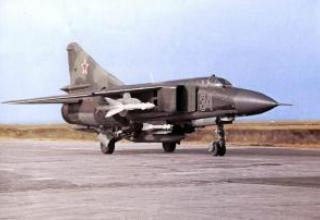In 1967, the French firm "Matra" began to design a close combat missile "Magic R.550". In 1974, the "Magic R.550" missile was adopted for service by the French Air Force and Navy. It was equipped with "Mirage IIIC", "Jaguar", "Super Etandar" aircraft.
In 1985, began mass production of an upgraded version, which received the designation "Magic-2". The rocket received all-around jamming CNS, differs less time to prepare for launch. "Magic-2" can be used on aircraft "Mirage 2000", "Jaguar IS/IB/IM", "Sea Harrier" and other carriers instead of missiles AIM-9 "Sidewinder".
Different versions of the missile are in service with the Air Forces of France, Greece, Egypt, Spain, Kuwait, UAE, India and other countries.
Composition:
The rocket is made by the aerodynamic scheme "double duck". In the head part in front of the rudders in one plane with them are 4 fixed aerodynamic surfaces, which serve to stabilize the flow and increase the efficiency of the rudders. Thus the angles of attack increase in comparison with the classical scheme of "duck" is provided. Wing arms are mounted on bushings and can freely rotate relative to the body, which reduces the moment of oblique blowing providing better control of the missile on the heel.
The missile is structurally made in the form of two compartments - front and rear, which are supplied separately in special containers. The front compartment contains an infrared homing head, autopilot, steering wheel drive, power supply, contact and non-contact fuses. The infrared head, which uses sulfur lead as an infrared detector, has high sensitivity. The detector is cooled with liquid nitrogen. The cooling system and liquid nitrogen cylinders are installed in an aircraft launcher. To detect a target in the head is used scanning mode at high speed, which is provided by a new system that has a single moving part of a flat mirror with low inertia. The homing head has high noise immunity.
Targeting can be made from any information sources: radar or optoelectronic sighting system, helmet-mounted target designation system or independently from the GSN of the missile on the suspension.
The steering wheel drive of the rocket is electric. A silver-zinc battery is used as a power source for the electronic equipment.
The missile has a non-contact fuse with a range of about 5 m.
The rear compartment accommodates a combat unit and a Romeo solid fuel engine with a total thrust pulse of 2650 kg/s and operating time of 1.9 seconds. The shrapnel-type combat unit is made with a preliminary incision of fragments taking into account the formation of the field of their flight.
The rocket can be launched in a wide range of flight speeds of the aircraft - the carrier (more than 1,300 km/h). Maximum allowable overload at the moment of launch is 6g.
Characteristics:
| Starter weight, kg | 89 |
| Weight BC, kg | 12.5 |
| Weight of BB, kg | 6 |
| Maximum launch range, km | |
| low | 2 |
| high | 8 |
| Minimum launch range, km | 0.3 |
| Rocket speed, M. | 2.7 |
| Flight time, s | 2.2 |
| Length, mm | 2750 |
| Body diameter, mm | 160 |
| Wheelspan, mm | 470 |
| Wingspan, mm | 650 |
Testing:
Terms of development of the M-1 complex were ahead of the terms of delivery of the head ship at Prospect 61 of Plant № 1701 (SKR-25 from 9.10.62 "Komsomolets of Ukraine") - so the Order of the USSR CM № 2110 of 30.07.1959. joint tests of M-1 were transferred to the rocket ship "Bravy" pr.56K. Tests on "Bravo" were held in two stages - from 5.01.62 to 12.03.62 and from 12.03.62 to 30.04.62. During the tests it was noted that the time of "Yatagan" exit from the cold position was 5 minutes, the range of "Yatagan" escorting the target was 42 km with a 50% probability of capture and 36 km with a probability of 80%. The missile's range was 15 km, and the self-destruct time was 26 seconds.
During the tests of the complex was shot down six target aircraft MiG-15M, flying at an altitude of 0.6 to 10 km, with missiles missed from 9 to 48 meters. According to the commission, the probability of hitting the aircraft at a miss of 20 meters is 0.9, while at a miss of 40 meters - 0.4-0.6. The M-1 complex could hit targets flying at a speed of up to 600 meters per second. The target can maneuver at altitudes up to 4 km with an overload of 3 - 4 g, and at high altitudes - up to 2 - 3 g. The speed of the ship during launches can be up to 36 knots. There was no firing from Bravoi on surface targets.
According to the results of tests on "Bravoi" the M-1 SAM system was recommended for adoption for service.
Sources:
- "История авиационного вооружения" Широкорад А.Б.
- www.fas.org
- http://bharat-rakshak.com




